Mini-LED Automotive Applications and Autonomous Driving Sensors
Mini-LED Automotive Applications and Autonomous Driving Sensors

Since 2014, China's auto industry has entered a development stage of medium-low growth. In 2017, China's automobile production was 29 million, becoming a phased peak in the past decade. After that, the production rate declined for three consecutive years, which means China's auto industry has entered the era of the stock game. At this critical competitive node, many new technologies appeared and have become the new driving forces for the automotive industry development.
1. Mini-LED Automotive Applications
1. The development of automotive displays
The automotive display is a key factor in facilitating the digital transformation of the cockpit. The increase in automotive computing performance enables the central computing platform to support LCD instrumentation. Display systems such as electronic rearview mirrors provide technical support for multi-screen systems.
After Evaluating the newly launched models in the past two years, large-screen and multiple-screen automotive displays have become increasingly popular. High-end models began to be equipped with more than four automotive display screens, entertainment screens, control screens, rear entertainment screens, streaming media rearview mirrors, and other products. The demand for large screens has grown rapidly.
From the perspective of instrument assembly data, 60% of new cars are equipped with LCD instruments. In the first three quarters of 2021, the assembly volume of LCD meters for cars in China was 6.544 million, which has a year-on-year increase of 44.5%. The 12 inches (inclusive) to 13 inches (exclusive) LCD meters accounted for the highest number, reaching 2.512 million units in total and a year-on-year increase of 35.0%. 10.0 inches (inclusive) to 12.0 inches (exclusive) of LCD instrument assembly volume grew fastest.
2. The advantages of mini-LED in automotive applications
Automotive display refers to the display screens installed inside the car. According to the display position, the automotive display can be divided into instrument displays, head-up displays, rear-view mirror displays, central control displays, and co-pilot entertainment displays.
With the rapid development of autonomous driving, the market demand for automotive displays in human-computer interaction will continue to increase. The display technology has a trend of multiple screens. The popularization of head-up displays and mirror displays is increasing. The requirements of automotive displays include high brightness, long machine life, short response time, and wide operating temperature ranges:
High brightness/contrast: The brightness of the vehicle display ensures that the driver and passengers can clearly receive information from the screen;
Long service life: The average vehicle life is 7-12 years. The automotive displays ought to reach the corresponding life;
Short response time: The speed of response time determines whether there is a smear, which affects the display clarity;
Operating temperature: The large temperature differences require better heat resistance and cold resistance of the automotive display. The operating temperatures are from -30℃ to 85℃.
In addition to cost and technology maturity, mini-LED displays outperform conventional LCD displays in terms of brightness, contrast ratio, operating temperature, flexibility, internal time and viewing angle. Mini-LED will also outperform OLED displays.
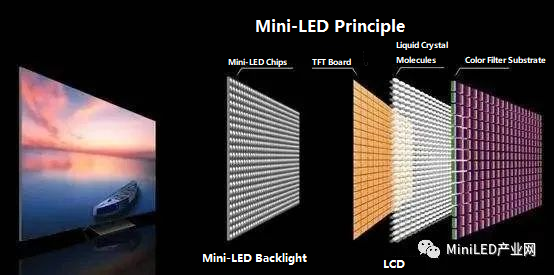
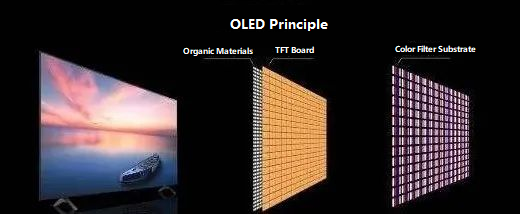
Automotive displays are massively integrated. The dashboard display, lightweight display, and front entertainment displays are grouped together to form a large screen, and all the function keys are integrated into the display, making the car even more clutter-free. Large screens have raised the requirements for curved designs, increasing the market shares of mini-LED. On the other hand, RGB tri-color LED chips to serve as self-emissive displays, further reducing chip size and pitch in small-pitch LED applications, such as automotive taillights.
3. The dynamics of Mini LED applications by car companies.
Most automotive display technology companies have deployed mini-LED, micro-LED, and other technologies. More and more automotive projects prepare to adopt mini-LED backlight technology.
Mercedes-Benz (automotive screen)
In January 2022, Mercedes-Benz flexed its muscles on the eve of CES with an all-electric vehicle (the Mercedes-Benz VISION EQXX Concept).
The EQXX created by Mercedes-Benz shows its verdict on the travel scenario for the future, which aims to reach high efficient electrics and smarts. Additionally, some of the technology shown on the EQXX could be officially available in mass-production cars in the next few years. When mentioning the cars, the design of the EQXX is more sci-fi. The biggest highlight was the 47.5-inch screen. The screen integrates the vehicle's instrumentation and infotainment functions.
The resolution of the screen has reached 7680*660, and the number of horizontal pixels has reached the 8K standard. At the same time, the screen does not adopt the commonly-used LED screen but uses the more advanced Mini-LED technology, with more than 3000 backlight partitions. In 2021, all Mini-LED products, including Huawei V75super TV and Apple iPad Pro, exceed 2880 partitions. Compared with the traditional LED, the Mini-LED display technology can accurately control the partition switch, and the contrast ratio is higher. At the same time, the more partitions, the better the light control effect and the higher the light control cost.
Cadillac (automotive screen)
Cadillac is going all-in on full electrification by 2030. The first step is to incorporate the traditional virtues of the 118-year-old brand into a modern electric crossover. Last year, Cadillac launched the LYRIQ luxury electric vehicle (SUV), which will be on sale this year. It represents the best innovation of Cadillac, cleverly integrating a variety of technologies, such as a 33-inch diagonal premium mini-LED display, AKG sound system, SuperCruise, and more.
Aside from the main instrumentation area behind the steering wheel, the Lyriq's 33-inch mini-LED display is curved with a rounded upper corner and features touch input. It is understood that Innolux is not only a first-class supplier of Cadillac's Lyriq mini-LED display but also a panel supplier.
NIO (car screen)
On the evening of January 9, 2021, NIO officially released its first ET7 at the NIODAY press conference.

NIO ET7 innovatively adopts BOE (JD.COM) 10.2 inches HDR mini-LED backlight digital instrument. Through the regional dimming technology, the precise light control of thousand-level partitions is realized. The color contrast is higher, which can more clearly reflect the driving situation of the vehicle and ensure driving comfort and safety.
Li Auto (car screen)
On March 17, the Li Auto official made the second round of spoilers for the relevant configuration of Li L9, including the luxury audio system, luxury seats, and interactive screen for safe driving, which will be officially released at the Beijing Auto Show.
The safe driving interactive screen uses a mini-LED screen and can also touch more. Mini-LED screens have better peak brightness. The position of the steering wheel is often exposed to direct sunlight. The brightness of the display is very critical. OLED screens are not suitable for displaying the same picture for a long time. A mini-LED screen is a more suitable option. In addition, the contrast ratio of the mini-LED screen is very high, which can highlight the advances of the car.
Great Wall (tail lights)
At the 2021 Guangzhou Auto Show, Great Wall's high-end brand Salon brought its first Mecha Dragon.
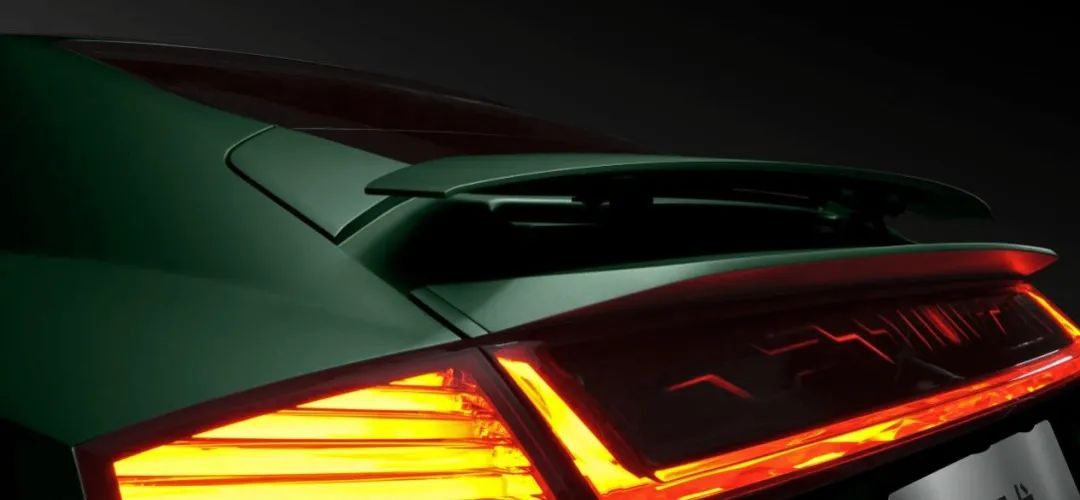
Mecha Dragon is the first to be equipped with a mini-LED display technology smart taillight composed of tens of thousands of LEDs at the rear of the body. The display pattern can be customized to create a personal and exclusive light energy field, which is highly recognizable in the traffic flow and can be called an eye-catching artifact.

SAC solder paste SnBiAg solder paste SnBiAgSb solder paste SnBiAgX solder paste SnBi solder paste BiX solder paste AuSn solder paste SnSb solder paste SnPb solder paste Anisotropic conductive paste Flux for ultra-fine-pitch soldering

2. Autonomous Driving Sensors
2.1 The current state of the perception system
Environmental perception refers to the linguistic classification of environmental scenes, such as obstacle types, road signs and signs, driving vehicle detection, traffic information, and other data. Positioning is the post-processing of perception results, which helps the vehicle understand its position relative to the environment. Environmental perception needs to obtain a large amount of surrounding environment information through sensors to ensure a correct understanding of the surrounding environment and make corresponding planning on this basis.
The environmental perception systems of mainstream driverless vehicles are shown below.
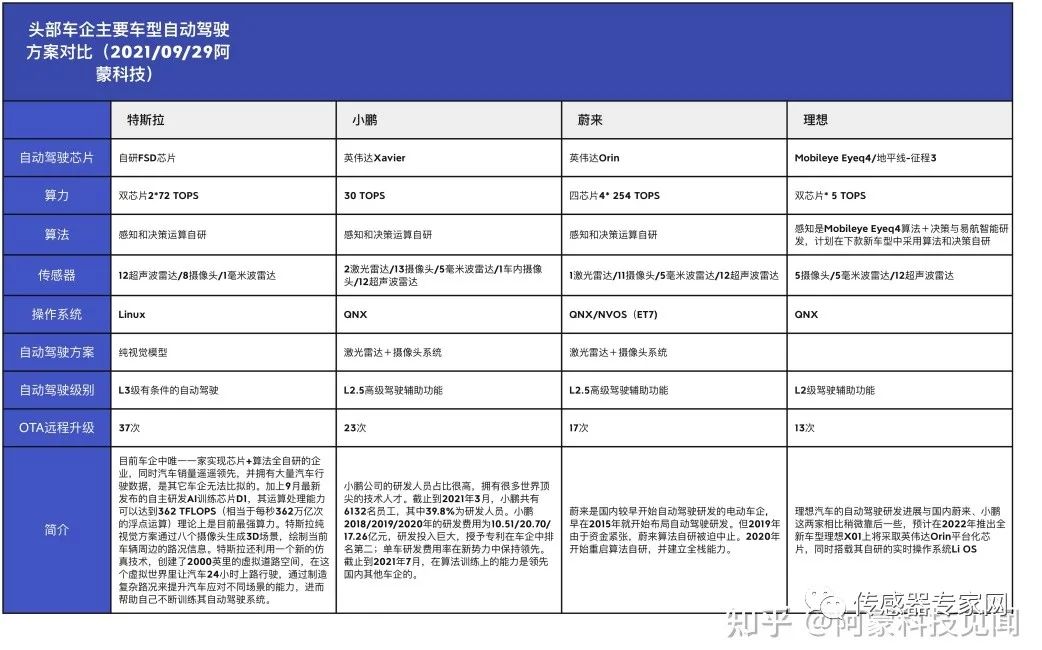
Zhihu > Driverless Vehicle Brand Table | Figure.
At present, major mainstream automobile companies such as Baidu, NIO, and BAIC have been permitted to perform road tests. L3-level autonomous driving has entered the actual test stage. Obtaining environmental and vehicle status information quickly and accurately is extremely important for safe driving.
02
Mainstream sensor analysis.
Commonly-used environmental perception sensors include ultrasonic radars, cameras, infrared thermal imaging, millimeter-wave radars, lidars, etc.
Ultrasonic radars
The price of ultrasonic radar is low. The price of a single ultrasonic radar is about tens of yuan. The obstacle determining accuracy in the distance of 0.2~5m can reach 1~3cm.
According to the operating frequency, the ultrasonic mine belt can be divided into 40kHz, 48kHz, and 58kHz. The higher the frequency, the higher the sensitivity and the smaller the detection angle. According to the structure classification, ultrasonic radar can be divided into equal and irregular squares. The difference can be defined by whether the horizontal and the vertical detection angles are the same. According to the technical scheme, ultrasonic radar can be divided into analog, four, two, and three active numbers. Its signal anti-jamming capability increases in turn, and the overall technical difficulty and price increase.
The detection range of the automotive ultrasonic radar is limited to within a few meters because of physical characteristics, which makes it hard to accurately detect the location of obstacles. In addition, multiple radars in the same frequency band slow down the speed of information collection and avoid echo battles. The detection accuracy is easily affected by speed, vibration, temperature, and humidity, challenging anti-jamming and calibration effects.
Camera
The camera is the closest to human eye imaging. Cameras have the advantages of high resolution, fast speed, rich information, and low cost. It is the only sensor that can read content information and detect vehicles, pedestrians, signal light color, traffic sign recognition, etc.
However, with the support of computing, the recognition rates are not necessarily to reach 100% (the current recognition rate is about 95%). A single camera cannot provide 3D information. Delay may occur. The 3D contents provided by the dual cameras have low precision, which makes them easily affected by severe weather such as night, rain, snow, and haze. Hence, the dual cameras are unsuitable for remote observation.
Infrared thermal imaging
Infrared thermal imaging can convert infrared radiation into infrared detectors through the infrared optical system. The infrared detectors convert radiation signals of different intensities into corresponding electrical signals, and then amplify and video process to form a video image. Finally, the image is shown on the screen through the terminal display. The audio equipment of the night-time driving-assisting product will give an alarm. Compared with sensors such as lidar, camera, and millimeter-wave radar, infrared thermal imaging sensors capture images with higher resolution. Since pedestrians and animals release heat, thermal imaging sensing technology can easily distinguish them without being affected by complex environmental conditions such as strong light, dusky surroundings, and haze.
Infrared thermal imaging only considers the temperature differences between the subject and the environment. It is not affected by visible light. It is an important technical means for driving in low-visibility environments (such as nighttime, fog, fog, reflection, glare, etc.). Any substance with a certain temperature will radiate infrared light when the line of sight is obstructed. The infrared sensor processes the measurement information into image information by measuring the infrared difference between the target and the background. It can effectively make up for the lack of cameras and radars.
Millimeter wave radars
Millimeter-wave radar is another commonly-used sensor for autonomous vehicles. It refers to a radar that works in the millimeter-wave band (wavelength: 1~10mm, frequency domain: 30~300GHz) based on Tof technology (Time-of-flight).
The millimeter-wave radar continuously sends millimeter-wave signals to the outside, receives the return signal of the target, and determines the distance between the target and the vehicle according to the time differences between the signal sending and receiving. The detection distance is more than 200 meters. Millimeter-wave radar has a strong anti-interference ability. It can penetrate rainfall, dust, and smoke better than lasers and infrared rays. It is suitable for all-weather working. However, its spatial resolution is limited (3°~5°), and the signal attenuation is large. It is easy to be blocked by buildings, human bodies, etc. The transmission distance is short, the resolution is low, and imaging is difficult.
Lidars
A lidar emits a laser beam to the target and then compares the signal reflected by the target with the transmitted signal. After proper processing, relevant information such as target distance, direction, height, speed, posture, and even shape can be obtained. Lidars have high detection accuracy, long detection distance, high sensitivity, and excellent anti-interference ability.
There are two types of lidars include mechanical lidars and solid-state lidars. Mechanical lidars have rotating parts that control the angle of laser emission, which are bulky, expensive, and have relatively high measurement accuracy. Solid-state lidars rely on electronic components to control the angle of laser emission, which are small enough to be mounted on vehicles. Currently, mechanical lidars are mainly used in autonomous driving. However, because the mechanical lidar is generally placed on the roof and used for engineering testing, it is hard to meet the large-scale, low-cost, and automotive-grade requirements for autonomous driving. MEMS is easier to implement solid-state lidars with relatively low cost, which has drawn manufacturers' attention.
The combination of lidar and other sensors is the best solution for autonomous driving. Lidars are solid and small. On December 21, 2020, Huawei released the 96-level high-performance lidar for the first time at a summit hosted by the China Association of Automobile Manufacturers. Huawei claimed to reduce the cost to $200. Once the price drops, lidar will become the first choice for autonomous driving.
03
Positioning system analysis.
The purpose of the positioning is to obtain the exact position of the self-driving vehicle compared to the external environment, which is the basis for self-driving vehicles. GPS and inertial navigation combined mode is usually used for autonomous driving. GPS is currently the most widely used positioning method. The higher the GPS accuracy, the more expensive the GPS sensors. Currently, the positioning accuracy of commercial GPS is far from enough. Its accuracy is only meter level, which is susceptible to interference from factors such as tunnels and signal delays.
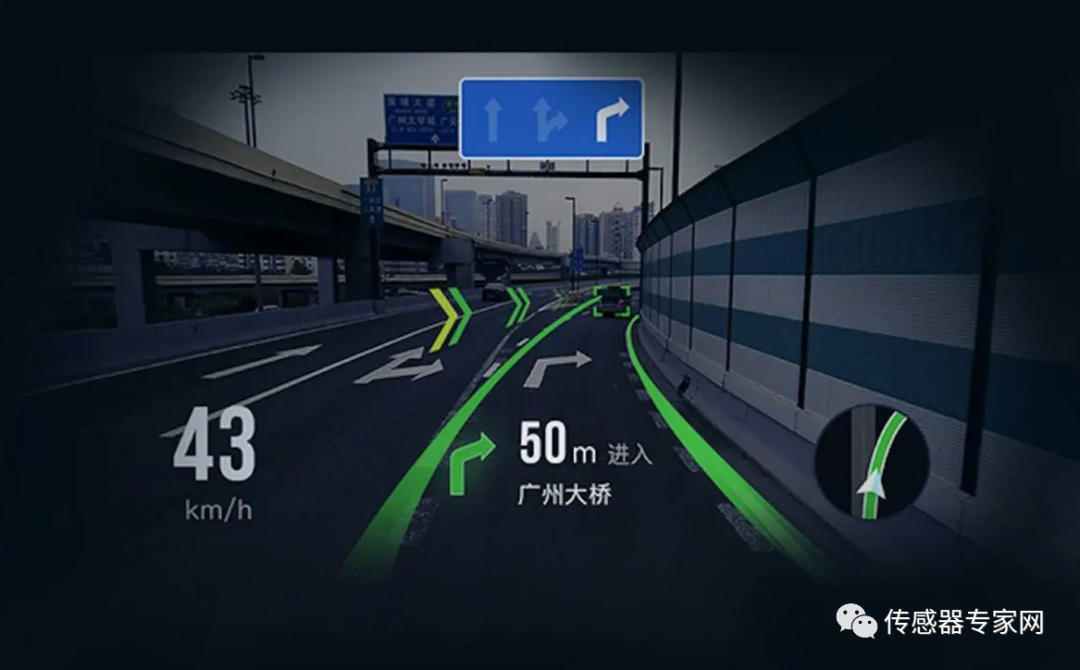
The schematic diagram of positioning application from Network
Inertial navigation is an independent navigation system that does not rely on external information or radiating external energy. It calculates the position by measuring the direction and acceleration of the movement and calculating the movement speed, angle, and position information. Inertial navigation has high anti-interference and concealment, which is not limited by meteorological conditions. It has a high update rate of navigation information, good short-term accuracy, and stability. However,t the navigation error diverges with time, and the positioning error increases with time. Long-term accumulation will lead to reduced accuracy. Inertial navigation requires initial alignment, but the complex alignment requires a long alignment time, which makes it hard to provide time information. The accurate inertial navigation systems are expensive, costing hundreds of thousands to millions.


















 Back to list
Back to list



